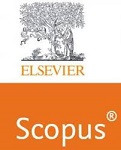Web-Based Solution for Efficient Waste Management
Keywords:
environmental, cooperation, responsibility, authorities.Abstract
Electronic waste (e-waste) is a rapidly growing worldwide environmental problem because of technological advances, reducing product lifespans, and big consumer demand [1],[2].E-waste contains vital substances such as gold, silver, and copper, as well as unsafe substances including lead, mercury, and cadmium, that could cause brilliant damage to human fitness and the surroundings if now not managed correctly[1].
Effective e-waste solutions consist of many techniques, which include recycling, reuse, sustainable product improvement, and public focus [3]. Methods to support the improvement of a round economic system and renewal, and to put into effect extended manufacturer responsibility (EPR) guidelines to hold groups accountable for the control of give up products. Further, new technology together with advanced analytical techniques and green extraction technologies can increase the recycling fee[2],[4].
Public schooling programs and worldwide cooperation are important to remedy the e-waste trouble and decrease its worldwide harm.
The need for cooperation between authorities, enterprise, and consumers to create a smooth, in experienced future.
Downloads
References
Bhuie, A. K., Ogunseitan, O. A., Saphores, J. D., & Shapiro, A. A. (2004). "Environmental and Economic Trade- offs in E-Waste Recycling". Environmental Science & Technology, 38(22), 6104–6112.
Kumar, A., & Holuszko, M. (2016). "Electronic Waste and Existing Processing Routes: A Canadian Perspective". Resources, Conservation and Recycling, 95, 10–21.
Cucchiella, F., D’Adamo, I., Koh, S. L., & Rosa, P. (2015). "Recycling of WEEE: An Economic Assessment ofPresent and Future e-waste Streams". Renewable and Sustainable Energy Reviews, 51, 263–272.
Jain, A., & Singhal, S. (2018). "Implementation of IoT for E-Waste Management". International Journal of Scientific Research in Computer Science and Engineering, 6(3), 58–62.
Arya, S., & Kumar, S. (2020). "E-Waste in India at a Glance: Current Trends, Regulations, Challenges, and Management Strategies". Journal of Cleaner Production, 271, 122707.
Agrawal, R., & Shastri, S. (2021). "A Blockchain-based Model for E-Waste Management". IEEE Transactions on Engineering Management, 68(4), 1220–1231.
Dehghanian, F., & Mansour, S. (2009). "Designing Sustainable Recovery Network of End-of-Life Products Using Genetic Algorithm". Resources, Conservation and Recycling, 53(10), 559–570.
Kiddee, P., Naidu, R., & Wong, M. H. (2013). "Electronic Waste Management Approaches: An Overview". Waste Management, 33(5), 1237–1250.
Srivastava, V., Ismail, S. A., Singh, P., Singh, R. P., Karmakar, S., & Singh, P. (2021). "An Overview of E- Waste Management in India". Journal of Material Cycles and Waste Management, 23(1), 121–133.
Ghosh, S. K., & Ghosh, S. (2016). "Circular Economy: The Role of Recycling and E-Waste Management". Procedia Environmental Sciences, 35, 706–717.
Zeng, X., Mathews, J. A., & Li, J. (2018). "Urban Mining of E-Waste is Becoming More Cost-Effective than Virgin Mining". Environmental Science & Technology, 52(8), 4835–4841.
Chancerel, P., & Rotter, V. S. (2009). "Assessing the Management of Small Waste Electrical and Electronic Equipment through Substance Flow Analysis". Waste Management, 29(8), 2336–2350.
Widmer, R., Oswald-Krapf, H., Sinha-Khetriwal, D., Schnellmann, M., & Böni, H. (2005). "Global Perspectives on E-Waste". Environmental Impact Assessment Review, 25(5), 436–458.
Sthiannopkao, S., & Wong, M. H. (2013). "Handling e- waste in Developed and Developing Countries: Initiatives, Practices, and Consequences". Science of the Total Environment, 463, 1147–1153.
Wang, F., Kuehr, R., Ahlquist, D., & Li, J. (2012). "E- Waste Management in Developed vs. Developing Countries: Best Practices and Future Perspectives". United Nations University Institute for Sustainability and Peace.
Rehman, Z., & Abbasi, S. A. (2018). "Decision Support System for E-Waste Management: An Overview". Environmental Technology & Innovation, 9, 96–104.
Rezaei, J., & Shirgholami, B. (2017). "Multi-criteria Decision-Making for E-Waste Recycling Processes". Journal of Cleaner Production, 166, 908–919.
Chibunna, I. U., & Onwukwe, S. I. (2020). "E-Waste Management and Optimization of Recycling Methods". Global Journal of Environmental Sciences, 19(3), 65–72.
Islam, T., & Huda, N. (2018). "E-Waste Recycling in Australia: Solutions and Future Directions". Procedia CIRP, 69, 974–979.
Hajek, P., & Vejražka, F. (2018). "Cloud-Based Software Solutions for E-Waste Management". IFIP Advances in Information and Communication Technology, 524, 205– 217.
Sahajwalla, V., & Gaikwad, V. (2018). "The Present and Future of E-Waste Plastics Recycling". Current Opinion in Green and Sustainable Chemistry, 13, 102–107.
Rajesh, S., & Padmavathi, S. (2022). "Machine Learning Algorithms for E-Waste Sorting and Recycling Optimization". Journal of Cleaner Production, 366, 132865.
Kumar, R., & Mishra, S. (2021). "Artificial Intelligence in Sustainable Waste Management Practices". Renewable and Sustainable Energy Reviews, 135, 110198.
Alaa, M., & Zaidan, B. (2019). "Smart E-Waste Management Using IoT-based Technologies". Journal of Sustainable Development of Energy, Water and Environment Systems, 7(2), 275–292.
Karmakar, A., & Mitra, S. (2023). "Blockchain and AI Integration for E-Waste Management: A Comprehensive Review". Environmental Research, 226, 115437.
Downloads
Published
How to Cite
Issue
Section
License

This work is licensed under a Creative Commons Attribution-ShareAlike 4.0 International License.
All papers should be submitted electronically. All submitted manuscripts must be original work that is not under submission at another journal or under consideration for publication in another form, such as a monograph or chapter of a book. Authors of submitted papers are obligated not to submit their paper for publication elsewhere until an editorial decision is rendered on their submission. Further, authors of accepted papers are prohibited from publishing the results in other publications that appear before the paper is published in the Journal unless they receive approval for doing so from the Editor-In-Chief.
IJISAE open access articles are licensed under a Creative Commons Attribution-ShareAlike 4.0 International License. This license lets the audience to give appropriate credit, provide a link to the license, and indicate if changes were made and if they remix, transform, or build upon the material, they must distribute contributions under the same license as the original.





